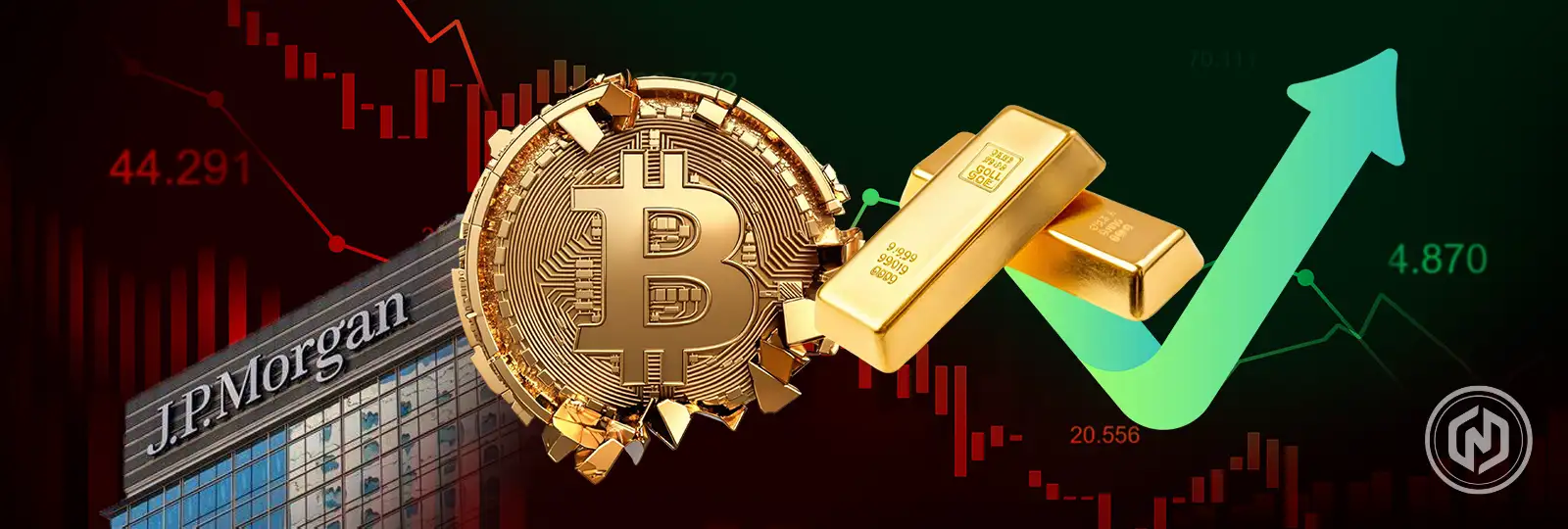Demand for traditional safe-haven assets such as gold has been gaining momentum as the situation globally continues to get uncertain. Meanwhile, speculative interest in Bitcoin (BTC) fades and underperforms. The contrast is clear, however, and doubts are raised as to Bitcoin’s function as a reliable one in times of stress.
Gold Gains Strength Amid Economic Tensions
Rising gold prices receive sustained support from rising ETF investments combined with enhanced futures market activity. JPMorgan records that global investment in gold ETFs reached $21.1 billion throughout Q1 2025, indicating strong investor interest. The major revenue of $2.3 billion stemmed from Chinese and Hong Kong investors.
Worsening economic conditions and geopolitics continue to expand public demand for traditional value stores. Data from the World Gold Council indicates that global gold ETF assets added more than total inflows to reach 6%. China and Hong Kong’s demand for gold-related products increased by 16% compared to the average global rate.
With speculators regularly buying the rising gold futures contracts since February, the market momentum has grown. The safe haven flow pattern is active despite the negative market development in liquidity and the decrease in trading breadth. Currently, the Swiss franc, Japanese yen, and gold coins have the quality of being a safe asset and have gained market worth.
Bitcoin Faces Outflows and Falling Support
Unusually, Bitcoin suffers from a downward market trend because investors shift their money towards non-speculative cryptographic assets. The market data shows JPMorgan reporting that Bitcoin Exchange-Traded Funds (ETFs) have experienced fund losses in the last three months indicating a decreasing demand trend. The gold market expands while participants refrain from using futures contracts.
The firm notes that Bitcoin has not functioned as a reservoir of safe funds throughout recent macroeconomic turbulence. The digital gold reputation of Bitcoin faces weakening credibility as gold maintains its existing strength. The correlation of Bitcoin with risk assets becomes significant due to its missing consistent demand, which creates increased pressure.
JPMorgan establishes a necessary support value of $62,000 to keep Bitcoin operational and evaluates it as a production expense. As the asset price approaches its nearest technical floor, the value of this level increases significantly. The continued backing does not outweigh the growing sentiment that discounts additional price gains at this time.
BTC-to-Gold Ratio Signals Shift in Preference
There has been a significant downward movement in the BTC/XAU ratio because Bitcoin has delivered less performance value than gold in current market conditions. The value of the BTC/XAU ratio dropped over 33% between January and April 18 to fall to 25.39 from its previous 38. Currently, the market situation shows a clear trend to invest in gold instead of crypto because the demand for crypto is falling.
Mathematical indicators reveal that BTC/XAU trades less than the Keltner Channel midline at 26.69. Moderate momentum for BTC/XAU leads to support at 24.15. The ratio’s movement underscores shifting capital allocations in response to economic stress.
The positive Chaikin Money Flow value of 0.12 strengthens the maintenance of gold inflows in the market, even through short-term pricing movements. The existence of worldwide risks may keep gold in high demand. Bitcoin faces potential challenges for survival unless developers present fresh, enhancing factors to the ecosystem.



